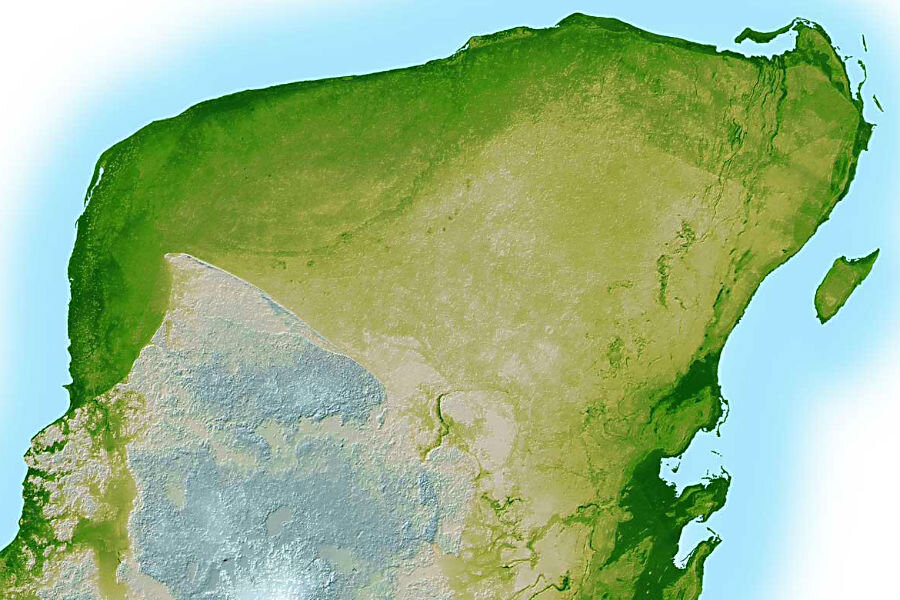Did the asteroid that did in the dinos drive up a temporary Mt. Everest?
Loading...
When an asteroid collided into Earth some 66 million years ago, wiping out the dinosaurs, it left a crater just off the coast of Mexico’s Yucatan Peninsula, where it struck. By drilling down into the “peak ring,” or the innermost ridge of rock tossed up by the impact, scientists say they’ve reached surprising conclusions about how the collision unfolded.
Researchers from more than a dozen countries found that the force of the impact splashed up rock from deep beneath the Earth's crust, bringing it to the surface, results published Friday in the journal Science.
“These rocks behaved like a fluid for a short period of time, and rocks don’t tend to do that,” Imperial College London geophysicist Joanna Morgan, who co-led the team, told The New York Times. “It’s a very dramatic process when you form a large crater.”
The study confirms the team’s unusual model for how craters form during powerful collisions: Over the course of a few minutes, a mountain of debris higher than Everest piled up, then collapsed again into a chain of smaller peaks, Dr. Morgan told the BBC. The Chicxulub crater, as it’s known, is the only preserved structure of its kind on Earth, making the team’s model useful in application to research into craters on the moon, and on other planets. And they also think their findings could help scientists better understand how the asteroid’s impact unleashed a cataclysmic change in the climate.
Funded with $10 million from the International Ocean Discovery Program (IODP) and the International Continental Scientific Drilling Program, the study posed several logistical challenges. About 66 million years’ worth of sediment blankets the crater. Rainforest covers the part that's now dry land, with the other part – including the center – lying below the Gulf of Mexico. That means the drilling took place offshore, as The Christian Science Monitor’s Ben Thompson wrote back in March, while the team prepared to launch their expedition:
A specialized IODP boat outfitted with three large pylons will sail from the Yucatán coast this April to an offshore location above a peak ring. There, the pylons will be lowered into the rock and the boat will lift up and out of the water to form a stable drilling platform from which the IODP team will send a diamond-tipped bit nearly 1 mile deep into the peak ring to drill and extract rock over the course of the two-month expedition.
After drilling through some 60 feet of water and 2,000 feet of earth, the team kept pulling up samples of limestone and brecchia, or fragments of melted rock, before finally hitting paydirt, according to Sean Gulick, a co-lead author and a marine geophysicist at the University of Texas at Austin.
“It was limestone, limestone, limestone, breccia. And then suddenly pink granite!” Dr. Gulick told The New York Times. “It was exhilarating, it looks like your classic pink granite countertop.”
But the granite also showed signs of intense stress, with deformations and fractures visible to the naked eye.
“That was the big find because that says that this peak ring didn’t come from something shallow at all,” he added. “It had to come from deep because it’s made of deeply buried crustal rocks now at the surface.”






